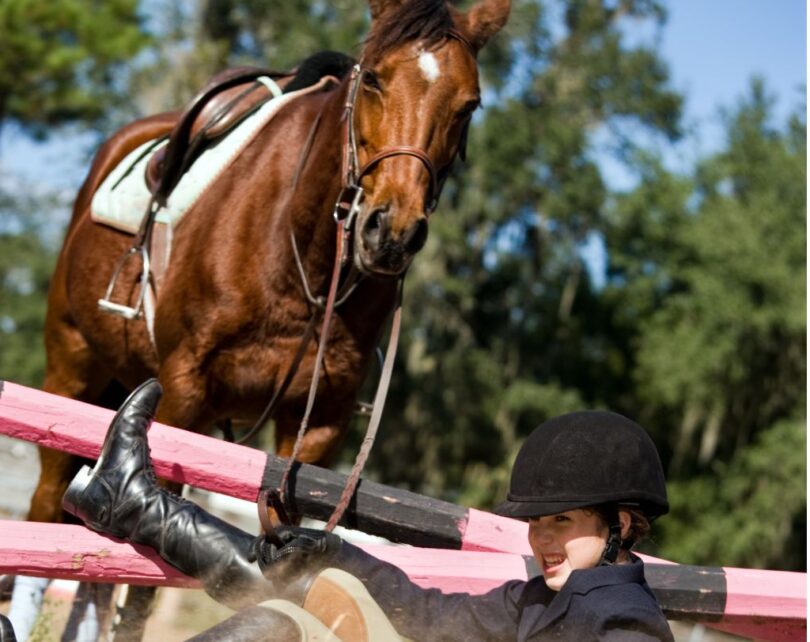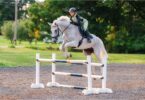The Importance Of Safety When Working With Horses
And Equestrian-Related Safety Stats You Need to Know
It is important to take safety seriously around horses—whether you’re in the saddle or hanging out around the barn.
Safety isn’t just for kids or beginners.
While it’s true that “rookies” make their fair share of mistakes, they are typically due to lack of education.
More experienced equestrians, on the other hand, tend to get “too comfortable” and become lax about safety best practices. They may also engage in higher-risk sports and ride more unpredictable horses.
It is important to consider safety at all levels of experience and participation in equestrian sports. Part of being around horses is learning how to view everything through a “safety lens”—a mindset that anticipates and mitigates risk.
Accidents happen, but developing a new lens will help keep you—and your horse—safer in the long run.
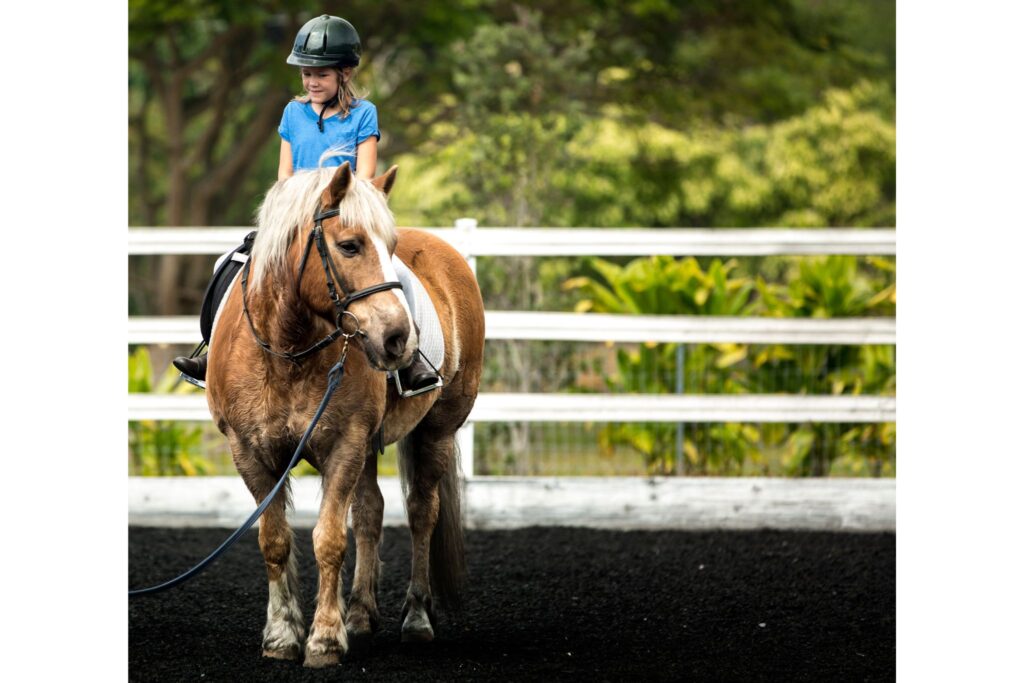
Source: Canva
Safety Basics
As we like to say, “Knowledge is horsepower”—understanding typical risks can help you prioritize safety, create and cultivate a safety mindset, and select the correct protective gear.
This article is the first in a series of four. Here we’ll discuss the risks of our sport and review common types of accidents and injuries that can occur when working with horses.
Remember: Safety is for everyone—regardless of age, experience, or discipline.
By following our best practices, you’ll learn how to stay relaxed and confident around horses, which in turn helps them to stay calm and focused. The end result? Better, safer rides!
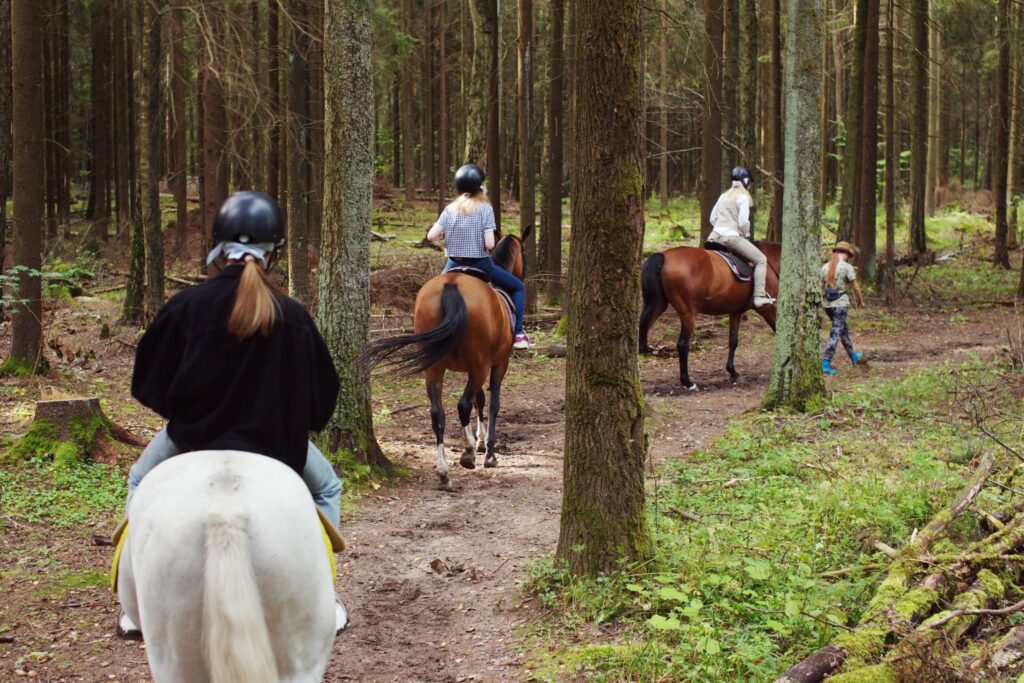
Source: Canva
Risk vs. Reward
Let’s address the elephant (err, pony?) in the room: Horses are inherently dangerous animals. They are strong and large, often weighing over 1,000 lbs, and can behave unpredictably. That’s the reality equestrians need to weigh against the (many!) rewards of life with horses.
Statistically speaking, horseback riding can be classified as one of the more dangerous sports you can choose to participate in.
However, like anything in life, the risks can be mitigated to allow for safe participation.
Generally speaking, risk increases with the intensity of the activity. Walking around an arena is safer than running a 16-second barrel pattern. Trotting over a ground pole is safer than galloping over a 3’6 jump on a cross-country course.
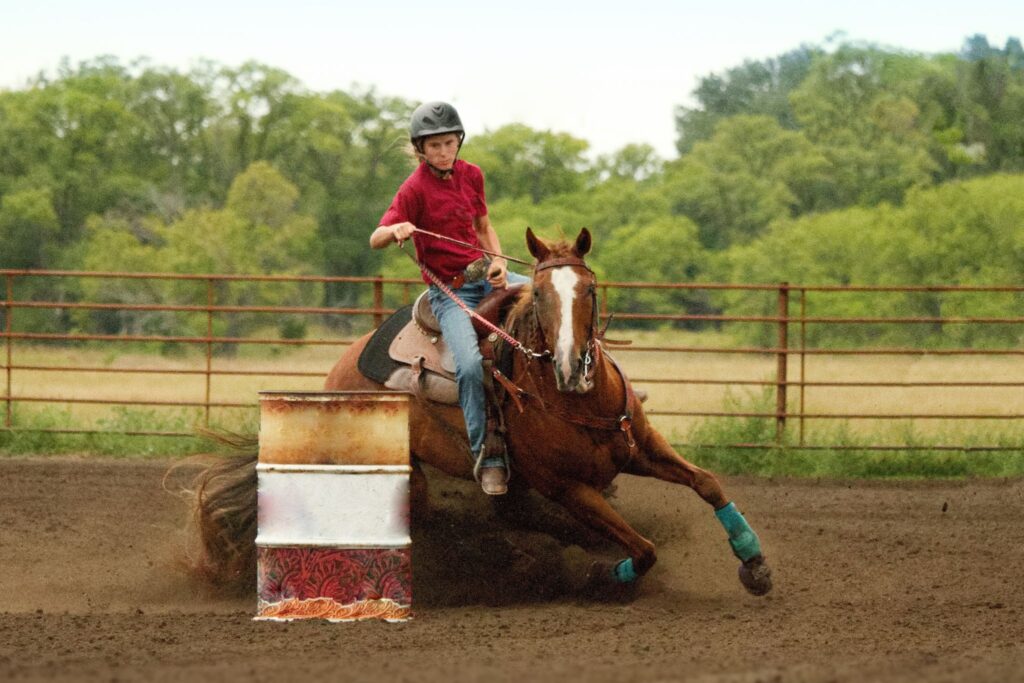
Source: Canva
Just like driving a car, higher speed means higher risk. Inexperience compounds that risk.
A spooky horse will be more dangerous for an inexperienced rider. It takes many hours in the saddle to learn balance and how to react to different stimuli—for this reason, beginner riders are typically paired with more experienced, mellow horses.
“Green” (young/inexperienced) and high-strung mounts are best left for experienced riders with more skills and higher risk tolerance.
Doctor John Mayberry of the Oregon Health and Science University in Portland studies equestrian injuries.
His first study, published in 2007, found that the risk of injury decreases with experience.
“Novice riders experienced a three-fold greater incidence of injury over intermediates, a five-fold greater incidence over advanced riders, and nearly eight-fold greater incidence over professional equestrians.
Approximately 100 hours of experience are required to achieve a substantial decline in injury.”
Source: Equus Magazine
While Dr Mayberry’s data is worth considering, research is conflicting with regard to experience.
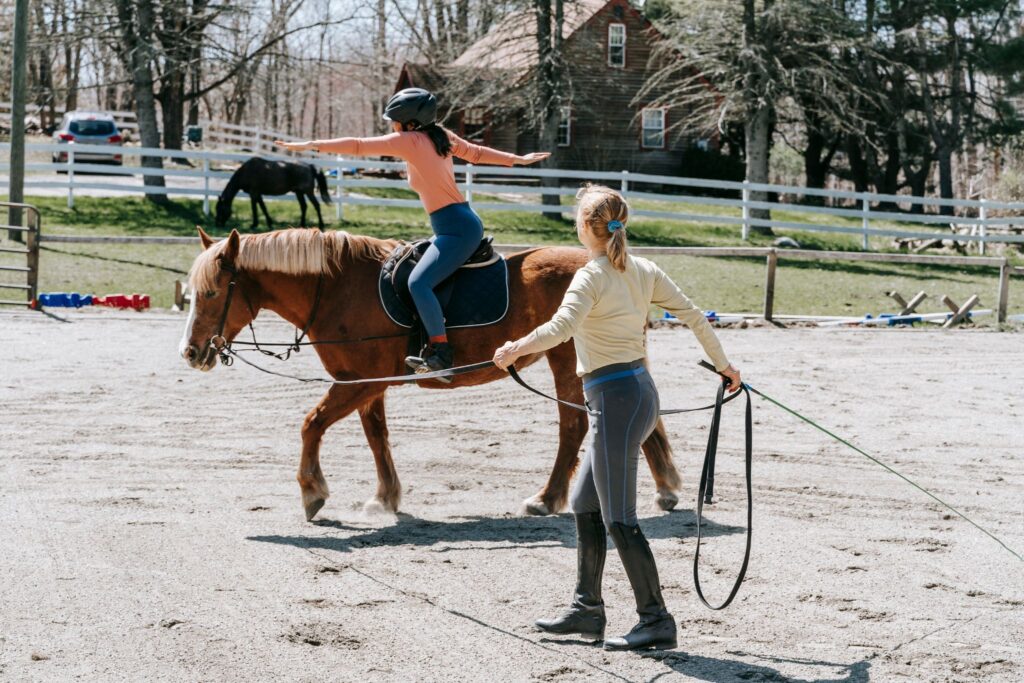
Source: Canva
While novice riders are more likely to be injured, experience does not necessarily equal safety.
More experienced riders are more likely to ride more challenging horses (such as training a young horse, or an instructor schooling a student’s problem mount during a lesson).
A Canadian study over a 10-year period found that the average riding experience of an adult admitted to a trauma center for horse-related injuries was 27 years.
Yet another study found that inexperienced, beginner and novice riders accounted for 65% of injuries over a four-year period. Experienced riders accounted for the other 35% of injuries.
Only 38% of the instances were deemed to be preventable; noted causes included rider inexperience, equipment problems, and unpredictable equine behavior.
The chart below shows the number of injuries treated in emergency rooms by sport from the U.S. Consumer Product Safety Commission. Horseback riding makes the top ten.
| The Top 15: |
| 1. Basketball: 512,213 |
| 2. Bicycling: 485,669 |
| 3. Football: 418,260 |
| 4. Soccer: 174,686 |
| 5. Baseball: 155,898 |
| 6. Skateboards: 112,544 |
| 7. Trampolines: 108,029 |
| 8. Softball: 106,884 |
| 9. Swimming/Diving: 82,354 |
| 10. Horseback riding: 73,576 |
| 11. Weightlifting: 65,716 |
| 12. Volleyball: 52,091 |
| 13. Golf: 47,360 |
| 14. Roller skating: 35,003 |
| 15. Wrestling: 33,734 |
Keep in mind, this data is measuring the number of injuries treated in emergency rooms—it does not account for the number of participants in each activity.
As you can see, though, there are a lot of statistics out there around horseback riding risks. It is important to use critical thinking when reading and interpreting statistics—it can be relatively easy to skew numbers to be persuasive to your argument.
Common accidents around horses
- Falling off a horse
- Being bitten or kicked by a horse
- Being stepped on by a horse
Only one of these accidents occurs when you are mounted on a horse—bites, kicks, or getting your feet stepped on can all happen on the ground.
It’s important to be conscious of safety any time you’re around horses, not just when you’re in the saddle.
Common injuries around horses
Of equine-related incidences, riding accidents tend to get the most attention—and for good reason. The most common injuries from riding accidents include:
- Traumatic Brain Injuries (TBIs)
- Head injuries account for approximately 20% of overall horse-related injuries and are the leading cause of death
- Upper Extremity Injury: 24-61%*
- Lower Extremity Injury: 36-40%*
*Of these, soft tissue injuries were most common (sprains and strains).
Traumatic Brain Injuries get more media coverage.
Based on what you’ve seen and heard in the news, which of the following sports do you think is responsible for the highest percentage of TMIs in adults?
A) Football
B) Horseback Riding
C) Skiing
D) Soccer
If you guessed B, horseback riding, you are correct!
According to data from the National Trauma Databank from 2003-2012, 45.2% of TBIs among adults were related to equestrian sports.
Contact sports such as football or soccer made up 20.2% of TBIs.
The researchers took it one step further and normalized the sports based on hours of activity. Horseback riding still resulted in a higher rate of hospital admission.
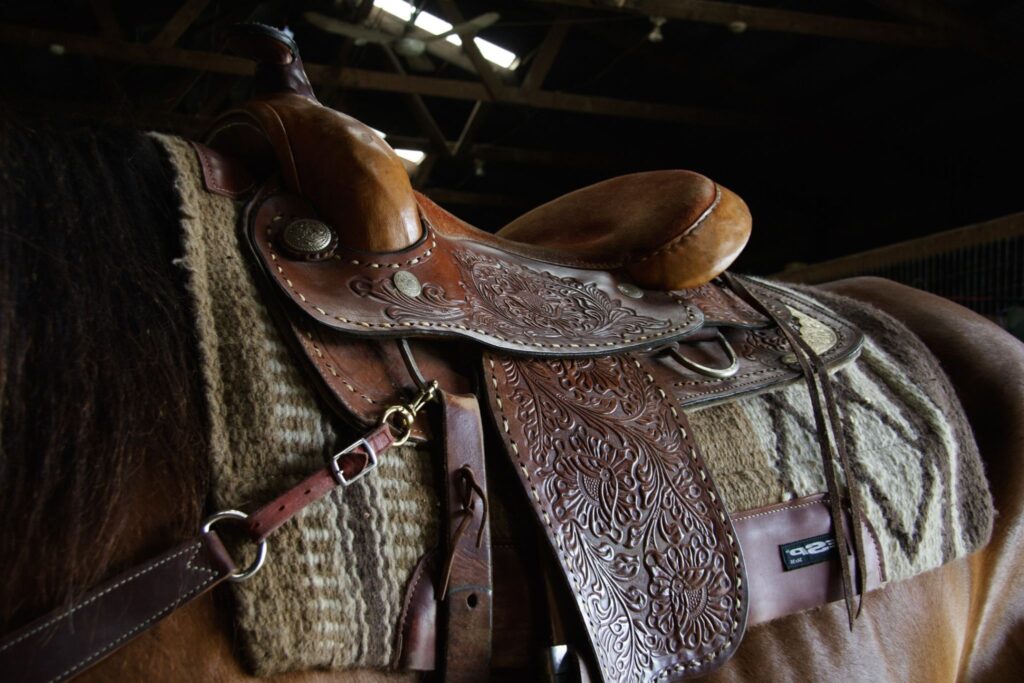
Source: Canva
Here’s another question: Which activity do you think is higher risk?
A) Horseback Riding
B) Motorcycle Riding
According to the data, you are more likely to be admitted to the hospital from a horseback riding accident than a motorcycle accident.
The TBI data referenced above was based on data from adults.
So, what about adolescents? A second study found that the leading cause for TBIs in children was from contact sports; skateboarding/roller skates came in second, and injuries from equestrian sports came in third.
This study measured TBIs by number of incidents, not percentages.
Here are a few points to consider when thinking about this data:
- In terms of overall participation numbers, more children participate in sports such as football, soccer, or basketball than horseback riding. Had the researchers divided the number of TBIs by the number of participants, the percentage may have been starker for equestrian sports.
- Without the raw data, it is hard to tell.
- Many breed associations require participants under 18 years of age to wear a helmet.
- Higher instances of TBIs in adults rather than children support the call-to-action to have adults wear helmets, as helmets reduce the chances of sustaining a TBI during a fall.
- The United States Pony Club saw a 60% decrease in the number of head injuries after mandating ASTM-approved helmets for all mounted youth.

Source: Canva
Parting Thoughts
So… are horses worth it?
Spending time around horses comes with risks; it also comes with rewards. We can develop deep and fulfilling relationships with our equine partners. We learn new skills and show off those skills in competition. We enjoy time outdoors and with our fellow equestrians.
The list goes on and on!
It is up to you to determine what level or risk you are willing to accept in order to reap those rewards, and what steps you want to take to mitigate the risks in our sport.
Behavior and equipment are key pieces of the risk mitigation puzzle, and we’ll discuss both in subsequent articles!
Frequently Asked Questions:
Q: What is the most common injury in horseback riding?
A: Head injuries are the most common injury when riding a horse, most often caused by a fall off the horse.
Q: Which is more dangerous, horseback riding or motorcycle riding?
A: Horseback riding is more dangerous than motorcycle riding. According to U.S. data from 2023, hospital admission rate for a horseback riding injury is 0.49 per 1,000 hours of riding, while for motorcycles it is 0.14 per 1,000 hours.
Q: What is the injury rate for equestrians?
A: According to U.S. statistics on horseback riding in 2023, 35.6 people per 100,000 reported a horseback riding injury.
Q: What safety equipment should you wear horseback riding?
A: A helmet and boots with a heel are the bare minimum any rider should put on before mounting up. This article provides great info on safety equipment for horseback riding.
P.S. Enjoy this article? Trot on over to:
- Safe or Sorry: How Often to Replace Horseback Riding Helmets
- Neigh 911: Equine Emergency Preparedness Made Simple
- Stability and Safety: How to Stack & Store Hay Bales
- 20+ Technology Essentials that Make Equestrian Life Easier
- 5 Best Riding Helmet Brands for Safety-Savvy Equestrians
- Horse Safety Rules You Can’t Afford to Ignore
- 9 Pieces of High Tech Horse Gear Anyone Can Master
Sources:
Equestrian Injuries: Trauma Center Statistics
Horse Riding Accident Statistics-2023

